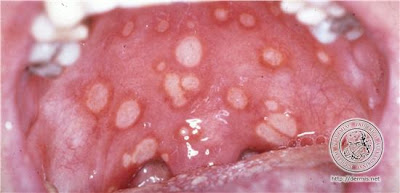
I am sure that this is possibly seen during the MRCP PACES exam. I have managed to see a few of these patients while travelling through the journey in MRCP and I could remember my friend who showed me this while patient was in the skin ward. Unfortunately the patient died a few days later.
So, could anyone tell me what is the diagnosis ?
Cutaneous T-cell lymphoma(CTCL is a form of T cell lymphoma first manifested in the skin, but because the process involves the entire lymphoreticular system, the lymph nodes and internal organs become involved.
Another term - mycosis fungoides (nothing to do with fungus)
Plaques, scaling or non-scaling, large(>3 cm) at superficial
(looks like eczema or psoriasis initially), later it becomes thicker and "infiltrated"
Nodules and tumours with or without ulcer
Poikiloderma with or without plaques and nodules
Extensive infiltration can cause leonine facies
Often spares exposed areas initially
Checklist of diagnosis :
1) History
2) Lymph node - biopsy if palpable
3) Skin biopsy with 1 micrometer sections
4) CXR
5) PBF
6) CT scan abdomen
7) Buffy coat - abnormal circulating T cells (Sezary type) and increased WBC (20,000)
Management :
pre CTCLor proven plaque stage with no lymphadenopathy/criculating T cells - PUVA photochemotherapy in most effective, topical chemotherapy with notrogen mustard in ointment base(10mg%)
If isolated tumours develop, should be treated with local x-ray or electron beam therapy
Extensive plaque stage - electron beam plus chemotherapy
Source :
- www.onexamination.com
- Color atlas and synopsis of Clinical Dermatology by Thomas B. Fitzpatrick et. al. (McGraw Hill)


 Case by Chye Chung
Case by Chye Chung 

















